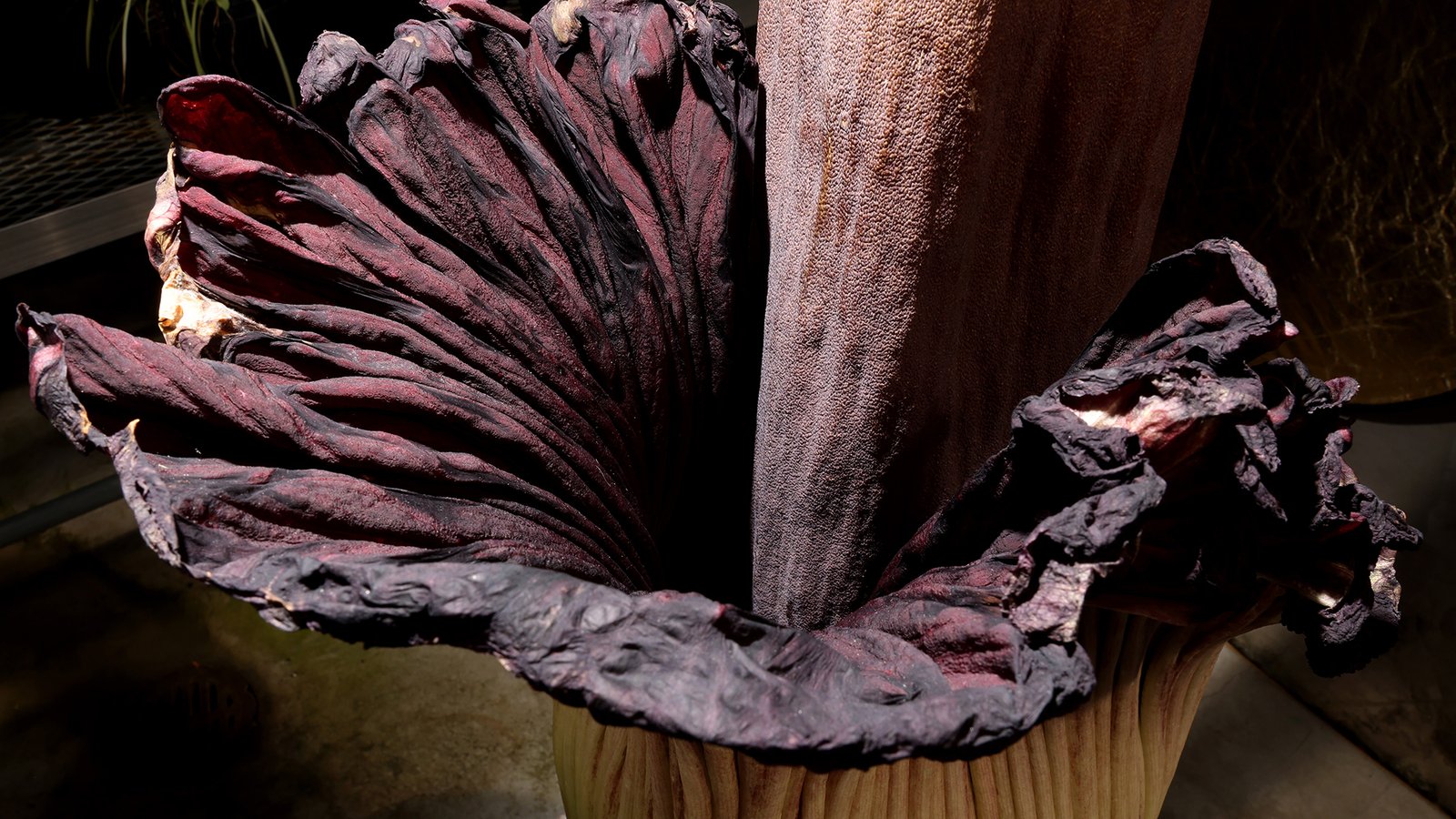Unraveling the Mystery of the Corpse Flower’s Infamous Stench
The titan arum, also known as the corpse flower, is a remarkable plant native to Sumatran rainforests in Indonesia. Standing over 12 feet tall and with a lifespan of decades, this giant tropical plant is most renowned for its foul odor resembling that of rotting meat. Despite the unmistakable scent, the chemical process behind this phenomenon has long puzzled experts. However, a recent study by researchers at Dartmouth University, published in PNAS Nexus, claims to have finally unlocked the secret of the corpse flower’s stench.
The titan arum blooms infrequently, typically once every five to seven years, during a short blooming cycle. As the flower opens, revealing a dark red petal layer, it releases a putrid scent to attract pollinators. Surprisingly, the corpse flower is not a single flower but contains multiple smaller flowers within its central stalk, known as a spadix. The spadix undergoes a unique process called thermogenesis, where it heats up significantly higher than the surrounding temperature, before emitting sulfurous chemicals to entice insects like flies.
While thermogenesis is a common process in animals, the occurrence of this phenomenon in plants is exceedingly rare. Through extensive research on their 21-year-old titan arum, fondly named Morphy, the team at Dartmouth University conducted RNA sequence analysis to unravel the genetic mechanisms behind the corpse flower’s unique characteristics.
The study revealed the presence of alternative oxidases and specific genes related to sulfur metabolism, which play crucial roles in generating the putrid odor emitted by the corpse flower. By utilizing mass spectrometry, researchers identified high levels of methionine and active enzymes responsible for producing compounds like putrescine, commonly associated with the smell of decaying animals.
Although these findings may not eradicate the unpleasant aroma of the corpse flower, they shed light on the intricate biochemical processes that drive its distinctive scent. Moving forward, researchers aim to explore the factors triggering the titan arum’s blooming cycle and investigate potential synchronization among multiple plants to enhance pollination opportunities.
